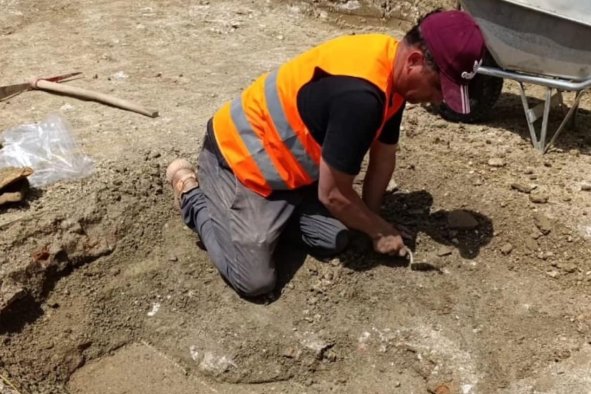Archaeologists have uncovered the remains of a lost centuries-old church near a medieval royal palace. The remains were found below a tennis court during excavations at the site of Visegrád, a castle town in Hungary.
The settlement, located north of the Hungarian capital of Budapest on the right bank of the Danube River, is known for its medieval citadel and royal palace ruins. The lost church once formed part of a former Franciscan monastery, the remains of which lie next to the palace's ruins.
The monastery was founded by King Sigismund in A.D. 1425. Sigismund was king of Hungary starting in 1387 but also became the monarch of several other European kingdoms and was crowned Holy Roman Emperor in 1433.
The Holy Roman Empire was a political entity spanning the western, central and southern parts of Europe that lasted for around 1,000 years, from the tail end of the first millennium until its dissolution in 1806. Rather than being a single unitary state, the empire was a confederation of numerous small- and medium-sized political entities.
Sometime after the monastery at Visegrád was founded by Sigismund, the Church of the Virgin Mary was built at the site.
In the first two days of the ongoing excavations, the remains of the church's sanctuary and its high altar were uncovered, the Visegrád Renaissance development program's Facebook page reported. Archaeologists subsequently found a large crypt in front of the main altar, which appears to have been looted after the monastery was depopulated.
Among the debris of the collapsed crypt, the skeletal remains of three individuals were found, Hungary's National Archaeological Institute said in a Facebook post.
Based on the objects found next to the remains, such as several lead rifle bullets, it is believed that these people may have been soldiers. Archaeologists also found a copper bowl near them, which bears indentations that appear to have been made with weapons. This suggests that the church may have been used for defensive purposes.
This evidence also indicates that the church may not only have experienced looting but also was the scene of a bloody confrontation.
The church may have collapsed or been destroyed after 1544, when Visegrád came under the control of the Ottoman Empire, which was established by Turkish tribes in Anatolia.
This empire became one of the most powerful states in the world during the 15th and 16th centuries. At its greatest extent, it covered most of southeastern Europe as well as parts of North Africa and the Middle East, including the territory where Israel is now located.
Do you have a tip on a science story that Newsweek should be covering? Do you have a question about archaeology? Let us know via science@newsweek.com.
Disclaimer: The copyright of this article belongs to the original author. Reposting this article is solely for the purpose of information dissemination and does not constitute any investment advice. If there is any infringement, please contact us immediately. We will make corrections or deletions as necessary. Thank you.



